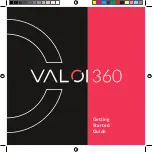
8/17/2015
Easier to Read Pro97/2055 Scanner Manual
http://marksscanners.com/97/97.shtml#open_closed
2/16
MultiSystem Trunking you can track Motorola, EDACS (GE/Ericsson), and LTR trunking systems.
Control Channel Only Scanning automatically determines the trunking frequencies for Motorola trunking systems only, once the control channels are programmed.
Repeater Finder Tool displays the current Home Repeater when monitoring LTR transmissions in manual mode.
Data Cloning lets you transfer the programmed data from one Pro97/2055 to another Pro97/2055. You can also download the programmed data from a PC to the scanner (using an optional
oneway PC cable), or upload the programmed data to the scanner (using a twoway PC cable) with the optional software.
Simultaneous Trunk and Scan scans conventional and trunked frequencies together at the same time.
16 Character, 4line, Dot Matrix Text Display lets you program a text label for each channel, bank, talkgroup ID, or a limit search so you can easily identify the transmission.
Trunking ID Delay variable delay (1/2 to 4 seconds) before searching for another talkgroup ID so you can hear more replies that are made on the same talkgroup ID.
6 Service Search Banks Marine, CB, FRS/GMRS/MURS, Police/Fire, Aircraft, and Amateur preprogrammed search ranges and 1 programmable limit search to reduce search time and
monitor interesting frequencies more quickly.
Tune Search The scanner will allow you to start searching up or down from a specific frequency.
Search Lockouts for each channel in the CB, Marine, and FRS/GMRS/MURS bands and 50 per band for each of the, Air, Police/Fire, Amateur, or limit search bands.
Attenuation lets you program your scanner (per channel or globally) to reduce the scanner's sensitivity to strong local signals or noise caused by these signals to reduce interference.
10 Channel Storage Banks you can store up to 100 channels in each bank.
HyperSearch and HyperScan searches up to 100 steps per second and scans up to 50 channels per second.
10 IDStorage Banks lets you store and/or lock out 1500 IDs in 10 ID banks that have 5 subID banks of 30 each. Each subbank can be turned on or off so you can monitor ID's you prefer.
Channel Lockouts lets you lock any channel in any bank.
Weather Alert can be set to automatically sound the alarm tone to advise of hazardous weather conditions when it detects the alert signal on the local National Oceanic and Atmospheric
Administration (NOAA) weather channel (SAME standby mode) or you can also scan and set the weather channel as a priority channel. Displays the weather event text with four alert levels so
you can see and hear the reason for the alert. Also has 3 programmable Skywarn channels.
TripleConversion Circuitry virtually eliminates (depending on your location) any interference from IF (intermediate frequency) images, so you hear only the selected frequency.
Backlit Keypad and Display select the time the light stays on or set to constant.
Three Power Options (Pro 97) lets you power the scanner using internal batteries; alkaline, NiCad, or NiMH; external AC power using an optional 9 volt 300mA AC adapter/charger (and
RS ‘type C’ adaptaplug); or DC power using an optional 9 volt DC cigarettelighter power cable.
Scan/Search Delay 2 second (adjustable delay with optional software and cable) scan and search delay before moving to another channel, frequency, or trunking system so you can hear
more replies that are made on the same transmission.
1 Priority Channel lets you program an additional frequency, one of the conventional channels, or a weather channel and then have the scanner check that channel every 2 seconds while it
scans the bank, so you don't miss transmissions on that frequency or channel.
Manual Access lets you directly access any channel or frequency.
Key Lock lets you lock the scanner's keys to help prevent accidental changes to the scanner's programming.
Battery Low Alert (Pro 97) warns you when battery power gets low by beeping about every 10 seconds.
Key Confirmation Tones the scanner sounds a tone when you press a key, perform an operation correctly, and an error tone if you make an error. Can be turned off.
Memory Backup keeps the frequencies stored in memory for an extended time if the radio loses power.
Your scanner can receive these bands:
Frequency Range
Step (kHz)
Mode (Default)
Band
Frequency Range
Step (kHz)
Mode (Default)
Band
2528
5
AM
CB, VHF Lo Band
157.4775161.565
7.5
FM
PoliceBusinessRail
2854
5
FM
10m/6m Amateur
161.570162.020
5
FM
Remote BroadcastMaritime
108137
8.33
AM
Civilian Air
162.025173.200
12.5
FM
Government Band
137138
5
FM
Satellite
173.20375173.2225
6.25
FM
Government Band
138144
12.5
FM
Government
173.225173.3875
6.25
FM
Government Band
144148
5
FM
2m Amateur
173.390173.40875
6.25
FM
Government Band
148150.775
12.5
FM
GovernmentSatellite 173.4125174
12.5
FM
Government Band
150.7825150.8125
7.5
FM
Auto Emergency
216.0025220
5
FM
Maritime
154.45625154.47875
7.5
FM
FireBusiness
220225
5
FM
1.25m AmateurGeneral Trunked
154.4825154.505
7.5
FM
Industry
225406
25
AM
Military AirMilitary Trunked
154.510154.525
5
FM
Industry
406512
6.25
FM
70cm Amateur, UHF TV
154.5275154.54625
6.25
FM
Industry
806823.9875
6.25
FM
Mobile Trunked Public Safety
154.5475154.6075
7.5
FM
Industry
849868.9875
6.25
FM
Base Trunked Public Safety
154.610154.655
5
FM
Police
894940
6.25
FM
33cm AmateurBusiness Trunked
154.6575156.2475
7.5
FM
Police
940960
6.25
FM
GovernmentBroadcast
156.250157.475
5
FM
Maritime
12401300
6.25
FM
23cm AmateurGovernment
Scanning Terminology
Contents
Note: To avoid confusion, and to also correct RS, I will be referring to the preprogrammed search ranges as bands and not banks. A band is something you search; a bank is where
you store things (like channels). The RS manual will refer to search bands as 'bands'; (correct), 'banks', 'frequency ranges' or 'search ranges' to really confuse people.
Scanning the process of stepping through conventional channels in scan banks.
Trunktracking (open mode) the process of searching for all active talkgroup IDs in trunked systems, in scan banks.
Trunkscanning (closed mode) the process of stepping through programmed talkgroup IDs in ID lists, in trunked systems, in scan banks.
Open and Closed Modes
You search all IDs in Open mode or just programmed IDs in Closed mode.


































